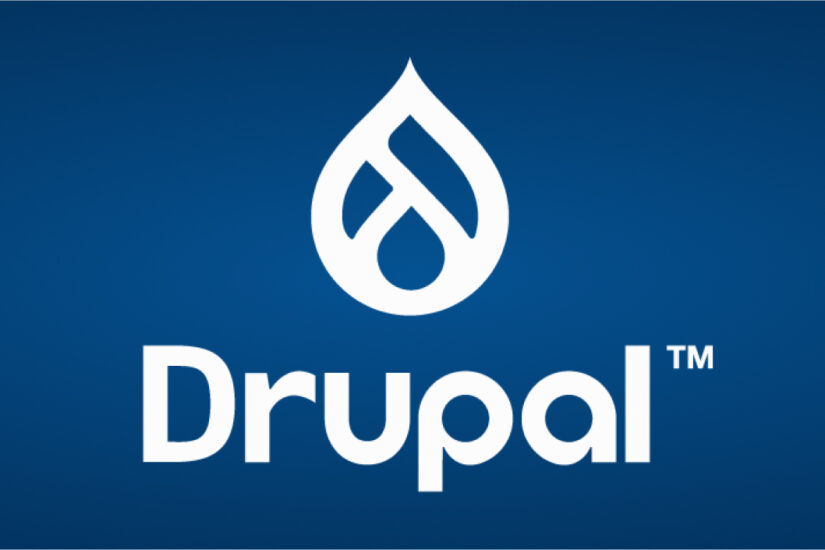If your site is already built on Drupal, or you’re considering switching to the platform, you’ve probably thought about what type of maintenance and support you’ll need to keep it up-to-date.
Whether it’s top-of-mind already, or you’re still looking for more information, this guide will help you understand why maintenance and support is an important part of your Drupal website strategy.
Table of contents
- Why is Drupal maintenance important?
- Essential Drupal maintenance and support tasks
- Drupal maintenance tips for different sectors
- Kanopi: The best Drupal website maintenance and support service
Why is Drupal Maintenance Important?
After a site’s been built, it still requires upkeep to ensure it operates effectively and meets your company objectives. Many businesses still take a “set it and forget it” approach when it comes to their sites, leaving them with outdated content, version issues, and vulnerable to security threats.
Whether you’re on D7 and you’re thinking about end-of-life planning, or you’ve moved to a newer Drupal version already, it’s important to factor in Drupal maintenance and support to ensure you’re keeping your site healthy.
“A continuous improvement approach is best for sustaining your website for the long-term.”
Anne Stefanyk, Kanopi CEO/Founder
By investing in Drupal maintenance and support you’re ensuring your site is successful in several areas, including:
- Protecting your sensitive information from security threats
- Ensuring compatibility with connected and underlying technologies
- Improving performance of your site
- Ensuring your website stays SEO optimized
- Keeping your website updated with current information and reflecting any time-sensitive changes
Essential Drupal Maintenance and Support Tasks
To ensure you have a website that functions optimally, you need to continuously update it. All Drupal websites are made up of a main Drupal core and various modules that require occasional updates. If you don’t run these updates and patches as they come, your website can be vulnerable to security threats and may have bugs and other malfunctions. It’s important to mention, this is not a Drupal-only requirement. All website platforms have similar needs when it comes to long-term maintenance.
Tasks that are key to a good Drupal maintenance plan include:
- Consistent site backups
- Drupal core updates
- Up-to-date themes and modules
- Optimized caching
- Optimized database
- Security updates
- Module, theme, and library version updates
- Third-party integration support
- Regression testing
- Bug resolution
- Infrastructure maintenance
- Uptime monitoring and abnormality alerts
- Emergency support
- Minor feature improvements
Some companies opt to take on their Drupal maintenance and support in-house, but it can be a time consuming process if your team lacks the skill set required to keep it working optimally. Even if you have the expertise internally, you may want to explore the option of outsourcing your Drupal maintenance and support to an agency to off load the work and allow your teams to focus on other priorities.
Shameless plug: We love Drupal at Kanopi! And, we love creating custom Drupal website maintenance and support plans for our clients.
Drupal maintenance tips for different sectors
Maintaining your Drupal website requires slightly different considerations depending on which sector your organization belongs to. Let’s review a few of the top industries that use Drupal and ways to maintain these websites.

Healthcare
Healthcare websites must be accessible and usable for audiences of community members looking for accurate medical information and healthcare resources. Maintaining a healthcare website requires keeping the following considerations in mind:
- Compliance with relevant legislation. The Health Insurance Portability and Accountability Act (HIPAA) and the Health Information Technology for Economic and Clinical Health Act (HITECH) are U.S. laws that protect private health information. To maintain compliance with these regulations, your healthcare website should leverage security measures like data encryption, strong passwords, and access controls.
- Accessibility. Healthcare website users may have a variety of permanent or temporary disabilities that affect their ability to use your website. They may also be in an anxious state of mind and need a simple web experience that facilitates convenient access to information. With these considerations in mind, your healthcare website should follow the Web Content Accessibility Guidelines (WCAG) to create a streamlined experience for all users. Examples of these guidelines include adding alternative text for images, captions for videos, and using clear and consistent navigation.
- Content updates. Refreshing your healthcare website’s content will help show visitors that your organization is on the cutting edge of new technologies and healthcare best practices. This includes updating your user personas based on new audience information, refreshing your user journeys, and updating your blog content with new research findings or testimonials.
Here at Kanopi, our healthcare support services go beyond the basics to ensure your site is a performant platform that continues to meet your goals over time. Review our work in the healthcare industry to get a sense of how we approach ongoing Drupal maintenance and support from a holistic perspective.
Nonprofit
The nonprofit website maintenance process focuses on ensuring your site remains a valuable resource for beneficiaries, donors, volunteers, corporate partners, and other community members. When updating a nonprofit website, pay special attention to the following elements:
- User experience and pathways. Has your audience undergone any major changes to their demographics, giving motivations, or donation capacity? Update your user personas based on new information. Then, ensure your website’s pathways are tailored to each persona with clear calls to action (CTAs), navigation elements, and tailored content that speaks to their interests.
- Donor information and payment processing security. To maintain donor trust, your website needs to securely process and store their payment information. Do you have a secure payment processor for your online donation page that makes the most of current security technologies and best practices? If not, consider switching to a new platform that can better meet your needs.
- Content and messaging updates. Does your website still accurately reflect your nonprofit’s mission and scope? Does it leverage multimedia content like photos, videos, audio clips, and interactive content to tell a comprehensive, compelling story? Ensuring that your site has a cohesive message is key to recruiting new supporters and retaining existing ones.
Considering that 27% of nonprofits have experienced cyberattacks, it’s essential to continually review and update not only your payment processing system but also other security aspects of your website. This includes running Drupal core, module, and theme updates whenever new versions are ready.
Government
Many government websites turn to Drupal because of its top-tier security, scalability, and flexibility. To make the most of Drupal for government needs and maintain a secure government site, prioritize maintenance elements such as:
- Compliance with federal and state regulations. Your government website must comply with relevant legislation at the state or federal level. For example, websites for federal agencies must be accessible, address consumer needs, comply with copyright laws, and follow other federal regulations.
- Easily accessible information. Providing high-quality, easily accessible information relevant to incidents of national significance is another core requirement for government websites. The information must be objective, conveniently accessible, and delivered without unnecessary jargon.
- Scalable network. Your website may have to adapt to traffic surges, especially during major national or international events when people are looking for official information. Ensure your site’s network can scale up to accommodate high traffic volumes and still deliver fast load speeds.
To deliver need-to-know information quickly, make sure your government website is also mobile-friendly. 92.3% of internet users access the web using mobile devices, meaning it’s critical to ensure your website is mobile-responsive and that all buttons and text are easy to read and tap on a mobile device.
Higher Education
Higher education web design trends subtly shift year after year as new generations of students seek information about colleges and universities they’re interested in attending. When refreshing your higher education website to maintain and support it over the years, optimize the following aspects:
- Usability. Your site should have clear user journeys for each core audience group, whether prospective students, current students, parents, alumni, or faculty and staff. Ensure your site is mobile-friendly and has clear pathways for each segment to help them get their questions answered and find the resources they need.
- Personalization. Website visitors increasingly seek personalized experiences tailored to their unique needs and interests. You can personalize the online experience your website provides by leveraging dynamic content that adapts to each user’s site behaviors. You can also allow visitors to create accounts on your website where they can access a personalized dashboard with relevant information, such as application deadlines.
- Interactivity. Interactive content generates over 50% higher engagement than passive or static content. Your higher ed website will benefit from elements like interactive tours, infographics, timelines, or quizzes.
The top college websites grow and change along with their audiences. If you need support when refreshing your Drupal college website, it can be helpful to work with an experienced web design firm (like Kanopi!) that can support you at any stage of the website lifecycle.
Kanopi: The Best Drupal Website Maintenance and Support Service
By choosing an agency to manage your Drupal website maintenance and support, you gain a dedicated team with years of expertise. At Kanopi, we work with you closely to genuinely understand your business needs and create a plan to support it.
We do the ongoing work to stay updated with the latest industry trends and Drupal updates so we can be your trusted partner in the process. Kanopi also takes a continuous improvement and growth-driven approach with incremental improvements like navigation strategy and SEO fixes, so your site is always improving.
Features of Kanopi’s Drupal Maintenance Service
Here are some of our top Drupal maintenance and support services:
- Module and plugin updates
- Bug fixes and security patches
- Development modifications
- Updating content types/views
- Third-party integrations
- CSS/HTML changes
- Commerce updates
- Performance enhancements
- Web accessibility optimization
- Technical SEO optimization
When you work with us, we also go way beyond the typical Drupal support and maintenance package. We provide creative support and ‘design on demand’, working with you on anything from user research, persona development, and conversion optimization to wireframing, mood boards, and style guides.
We’re here to help with your Drupal maintenance and support. Reach out to get started!









